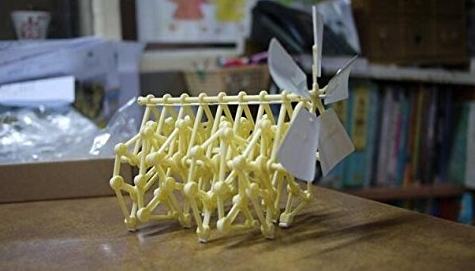Cool Tools 2014 Holiday Gift Guide: Kevin’s Picks
Favorite gift ideas from the founder of Cool Tools
This month we’ve run a series of gift suggestions. In our final installment, Cool Tools founder Kevin Kelly selects his favorite toolish gifts. Happy holidays!

Stick N Stack Magnetic Tiles ($150)
Magna-tiles are large plastic shapes with super magnets buried along their edges so that they can be linked into solid sculptures. They are an open ended construction system that can make tall and complex buildings very fast. They are a lot of fun for kids who are too small to use Legos. We’ve reviewed them previously on Cool Tools.
To do much with them, though, you need lots of tiles, which can get expensive. But now there are a number of cheaper knock-offs, or alternative systems, that are compatible with Magna-Tiles. Brands include PicassoTile, Connect Tiles and Stick N Stack. These systems work interchangeably with Magna-Tiles — their magnets line up exactly in the same places on the same sized pieces. They seem to be just as durable, but they are cheaper. I have the 150 piece Stick N Stack set and the pieces work perfectly with my MagnaTile pieces, and they come in a few more shapes, such as windows, arches, and frames. With a large set like this, the magnets allow even small kids (and grownups) to rapidly build complicated structures.
The Perplexus is a 3D maze that requires concentration and dexterity to solve. It’s designed so you keep advancing to levels of greater difficulty, but you need to start over if you die. However starting over is easy. The kinetic manipulation of your hands needed to solve this resemble the twitches of a video game controller, but there are no electronics at all in this game. It’s a lot of fun because it is so physical, but it is not easy to solve. We previously recommended this as a great Cool Tools toy that won’t get old very fast, and will never need batteries.
Still, I never made it to the end (although my teenage kids did). To give beginners more a chance, Perplexus came out with a simpler version called the Rookie. I can actually complete this one, and so can 6-year olds. At the same time they also released two more difficult Perplexus versions for that smarty-pants in your family who found the original Perplexus too easy. The Perplexus Twist ($25) requires some problem solving and the Perplexus Epic ($22) is epically difficult to complete. All three of these (and the original) are beautiful works of art that could also sit in a glass display case with ease.
This is a kit for assembling a small working version of Theo Jansen’s famous walking machines called Strandbeests. Jansen’s original contraptions were larger than human machines made of PVC pipes that would walk along the beaches in the Netherlands, powered by the fierce winds. This miniature kit version uses the same geometry. The tiny Strandbeests can be powered by a hair dryer or small fan. This kit is released as a special issue of a Japanese magazine, but it comes with a minimal set of instructions in English. It is not difficult to assemble (most parts are duplicated) needing about 2 hours for someone say 8 or older. To appreciate the genius of its design, be sure to watch any of Jansen’s video of the large-scale machines in action.
There are other knock-offs which I have not built yet.
4D Vision Anatomical Models
Human Head Model ($19)
Eyeball Model ($15)
Human Muscle And Skeleton Anatomy Model ($17)
These plastic anatomical models are inexpensive and small. Putting them together from even smaller pieces is a bit of a puzzle, in that the directions are almost non existent. You have to just see how your body parts fit. Younger children will need help, and even adults may be challenged. Yet the models are highly detailed, informative, revealing, and for an anatomical model, incredibly cheap. I have put together the eyeball, the heart, the muscle man, and head. I learned a lot about each by putting them together. In addition to being instructive and useful for health education, they make great displays. — KK
Expensive but indestructible. This is the microscope that science museums and public education teachers use. These scopes take a lot of abuse, yet are simple to use. I’ve also seen them used on sailboats because they don’t corrode. It has only one moving part, no electricity, and provides decent magnification. We keep one out on the table at our home, with the philosophy that the best microscope is the one that is open and ready to use. It’s fine for very young kids to use all by themselves, with almost no instruction. It will last several lifetimes. You can easily make micro photographs by holding a camera or phone right against the eye piece.
Want more gift ideas? Take a look at our other 2014 Holiday Gift Guide and 2013 Holiday Gift Guide posts.
12/17/14












